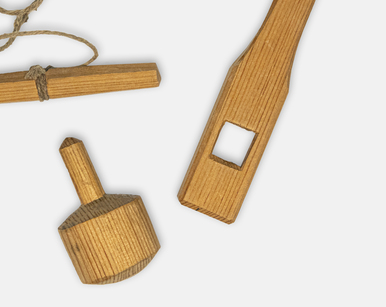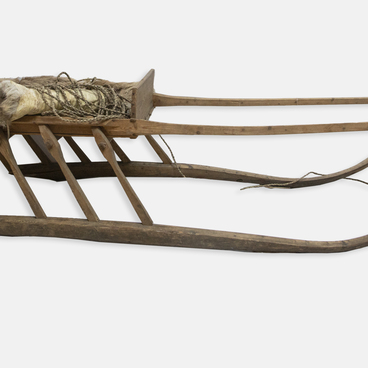Pimy are a traditional winter footwear of the indigenous peoples of the North — the Komi, Khanty, Mansi, and Nenets. Traditionally, women sew them by hand using reindeer tendon threads.
Pimy are very comfortable, warm, and light. They consist of stockings with fur inside and outer boots with fur outside. Pimy are sewn from kamus — a piece of hide from the lower leg of a deer. The pile is directed downward so that snow and droplets of water can easily roll down the boots.
Up to ten pieces of such hide are needed to make a pair of women’s pimy. Before being used for making boots, the materials are thoroughly processed: soaked, stretched, dried, frozen, dipped, and stored in sawdust. Kamus hides are small, so they are carefully matched by shade. The rarest and most expensive pimy boots are made of white and gray fur.
The cut of women’s boots differs from men’s, as the front strip of deer hide is much narrower and ends with a narrow toepiece, not reaching the toe. The boots can be thigh-high and are attached with straps to the belt, unlike men’s pimy, which are additionally tied below the knee with a rovduga (buckskin) or wool cord to prevent them from slipping while walking.
In women’s pimy, the decorative pattern is usually located on the toepiece and not the boot top, because women’s clothing is longer than men’s and covers most of the boots. The décor of women’s pimy literally represents a code of rules that a Nenets woman is supposed to follow throughout her life.
The horizontal stripes symbolize prohibitions, and the upper rim — the sky above the head. The stripes leading in different directions are the rays of the sun over the chum, the portable house of the northern peoples, which a woman is supposed to take care of. The pimy are also decorated with colored cloth and embroidered with beads.
Unlike men’s boots, women’s ones never have soles of deer foreheads — only from the hide around a reindeer’s hooves. The reason is that, according to superstitions, women’s boots are “unclean”.
According to northern legends, women are able to
communicate with the evil forces of the Lower World. A woman is literally able
to take a step there — so her boots become dangerous. For the same reason, a
special suede bag — shuipaty — is made for women’s boots. It is transported on
a separate wooden sled, apart from other belongings.





